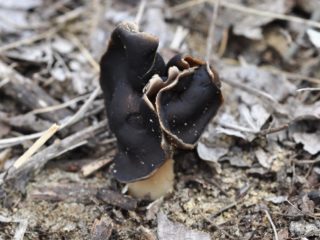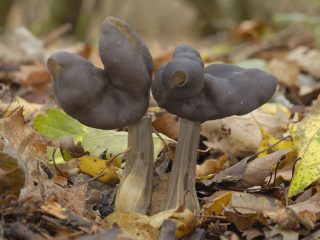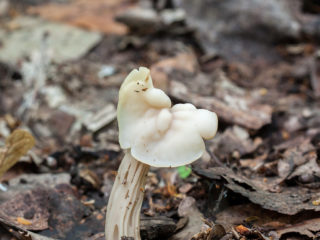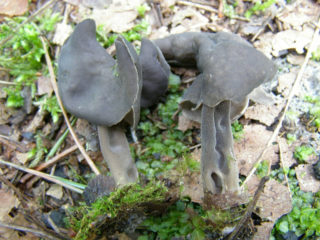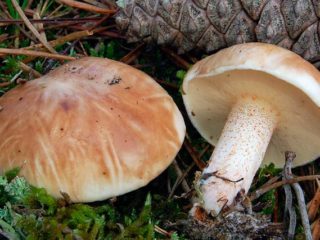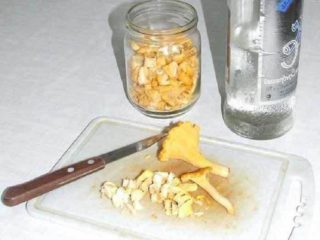Content
Long-legged lobe is an unusual mushroom of the Helwella genus. Having met his family in the forest, you would think that someone had placed a service in the middle of the clearing. This is due to the fact that the upper part of the mushroom resembles a glass in which morning dew collects. This species is also called macropodium and long-legged Helvella, and in official mycologist reference books it can be found as Helvella macropus.
What do long-legged lobes look like?
The fruiting body of this species consists of a pseudocap and an elongated stalk. The diameter of the upper part reaches 2-6 cm. Its shape is irregular, round-disc-shaped with edges turned up, which in appearance resembles a glass.However, there are specimens that look like a saddle, since their pseudo-cap is flattened on both sides. The inside surface is smooth and light in color, but on the outside it is fleecy and pimply, and its color is darker, ranging from brown to purple. Due to the structure of the upper part, water often collects in it.
The pulp of the long-legged lobster is thin and watery. It crumbles easily even with slight physical impact. At the fracture it has a gray tint, which does not change upon contact with air. There is no obvious mushroom smell.
The stalk reaches a length of 3-6 cm depending on the age of the mushroom. The thickness of the lower part is 0.5 cm. Its shade is light gray, like the inside of a pseudo-hat. The surface may be smooth or slightly bumpy. The lower leg is slightly thickened. When cut open, you can see the cavity inside.
The hymenophore is located on the outside of the upper part. The spores are white, their size is 18 – 25 × 10.3 – 12.2 microns. They have the shape of an ellipse or spindle.
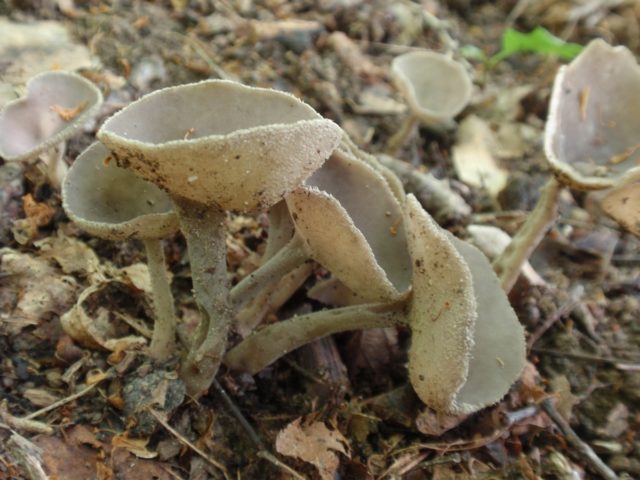
Often the leg of this bladed plant narrows at the top
The long-legged lobe has a clearly expressed characteristic feature that sets it apart from other cup-shaped relatives - an elongated narrow leg. However, it can only be distinguished from less common representatives of this genus by microscopic features in laboratory conditions.
Where do long-legged lobes grow?
The long-legged lobe belongs to the category of saprotrophs, therefore, certain favorable conditions are required for its growth. For nutrition, it needs a substrate based on organic compounds that are formed as a result of the decomposition of plant remains.Therefore, most often the long-legged lobe grows on half-rotten stumps and tree trunks that are in the last stage of decomposition. It can also grow directly in rich organic soil, grass and moss.
This species grows in families consisting of 4-10 specimens, but in exceptional cases it can be found alone.
This species can be found in mixed and deciduous forests in the central part of Russia and European countries. The representative belongs to the category of less common mushrooms.
The fruiting period of the long-legged lobed begins in mid-summer and lasts until early October. Its duration depends on weather conditions.
Is it possible to eat long-legged lobes?
The long-legged lobster is considered inedible. It cannot be eaten even after preliminary heat treatment. Although this fact remains questionable, since special research in this direction has not been carried out.
But, judging by the appearance and degree of prevalence of the long-legged lobe, it is unlikely that a mushroom picker (even a beginner) will want to collect and prepare it.
Conclusion
Long-legged lobe is a prominent representative of the Helwella genus. It is considered little known among lovers of quiet hunting, as it belongs to the category of inedible. But it enjoys increased interest among mycologists.
This mushroom can rarely be found in the forest, but if you manage to find it on occasion, you should not pick it out of idle interest.It is better to admire it from the outside and give the spores the opportunity to fully mature, which will allow it to leave behind offspring.
